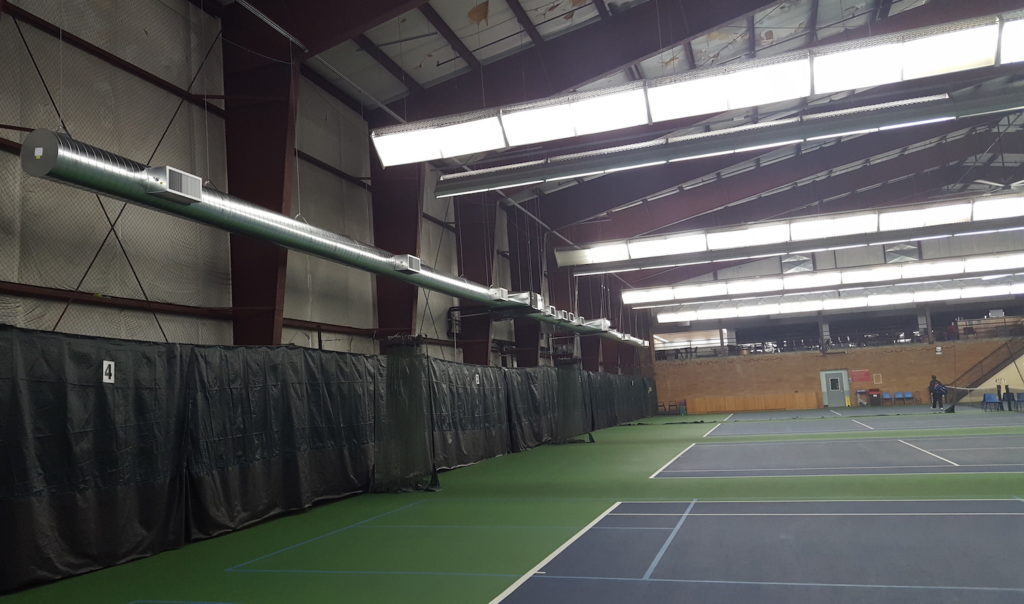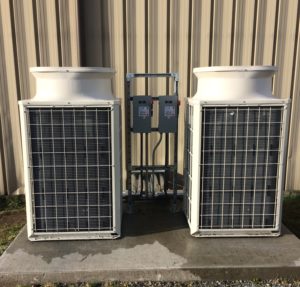Tennis Center Aces Energy Efficiency Upgrade
The Sprinker Recreation Center is the community recreation hub for residents in south Pierce County. From ice skating to skateboarding to tennis, the center offers something for children, families and adults. A recent energy efficiency upgrade inside the tennis center building has made it an even more comfortable place for competitors to gather.

Unheated courts are uncomfortable
With four indoor tennis courts, and four indoor pickleball and racquetball courts, the Sprinker Tennis Center was struggling with occupant comfort. In the winter time, the courts were cold thanks to antiquated electric heaters unable to meet the heating demand. The system was inefficient from a cost perspective as well, which resulted in higher electric bills.
The Facilities Management (FM) team was charged with improving the heating and cooling in the center and reducing energy consumption and costs at the same time. The FM team worked with Seth McKinney, the resource conservation manager for the county to find a solution. Together, they turned to Hultz BHU Engineering, Elmhurst Mutual Light & Power, and engineers from BPA’s Trade Ally Network NW.
Heating and cooling more efficiently
The team selected a variable refrigerant flow (VRF) system, which cools or heats a space more efficiently than standard systems by moving variable amounts of refrigerant to each space independently in order to cool or heat it. Compared with other heat pump systems, VRF saves energy with better part-load performance, zone control, and heat recovery options. By reducing the amount of ductwork, fan energy use is reduced by 10-20 percent.

Sprinker Tennis Center earned incentives from their local utility that covered approximately ten percent of the overall project cost. Long-term, however, the energy savings from the new system will be significant. Not only will they reduce energy use, but they’ll trim their overhead costs at the same time.
“We’re already seeing savings in terms of heating and the air temperature is greatly improved,” observed McKinney. “This upgrade has helped deliver a better customer experience to the players using the courts.”
Other energy efficiency upgrades are in the center’s future. A lighting upgrade planned for 2020 will swap out current T5 lighting with LED high-bays to save energy, reduce maintenance costs and improve visibility for players.
